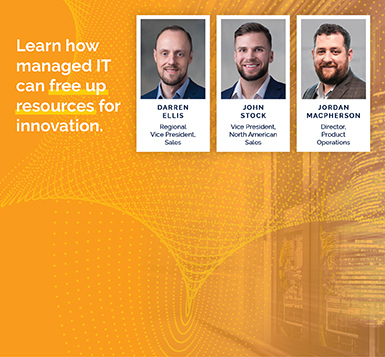5 Key Services to Assist with Digital Transformation
Park Place Professional Services
By Guest Blogger Rob Brothers, Program Vice President, Datacenter and Support Services, IDC
Business leaders are digitally transforming their business to both combat disruptive market forces and drive growth. To help the firm accomplish this transformation, the IT organization must evolve from one that spends 80% of its resources on IT operations support to one that enables digital business models and innovation. This evolution of IT becomes more challenging since most enterprises are asking IT departments to manage ongoing IT operations with fewer resources. The chart below shows where IT staff members spend most of their time.
IT Time Spent on Tasks
- Before you implemented a proactive connected support tool, or for systems that do not use a connected support tool, please indicate the percentage of time spent on the following IT tasks involved with supporting your infrastructure.
n = 501
Source: IDC’s Worldwide Converged/Hyperconverged Services Attach Rate Survey, 2018
Accelerate IT Evolution through Service Partners
Service Partners can help IT accelerate their shift in focus and resources toward digital transformation initiatives. IT leaders should evaluate internal capabilities and maximize existing and potential third-party relationships. Survey work by IDC has found that enterprises are looking for vendors that have the capabilities to support operations in the following areas:
- Discovery and asset management. One of the biggest challenges for companies going through any compliance process is uncovering all assets (their locations and purposes), whether under lease or purchased via a capital expenditure within their organizations. Because most of the record keeping for IT equipment is an Excel spreadsheet exercise, there can be discrepancies and incomplete inventories. Having quick and easy access to not only the location of the assets (hardware and software) but also their functions, interdependencies on other assets, and associated contracts are key capabilities to look for when evaluating service providers.
- Monitoring/tools/automation. In addition to asset management capabilities, online tools that can utilize artificial intelligence (AI), machine learning (ML), and cognitive abilities to enable self-help, self-healing, and optimization capabilities are other key attributes the enterprises want from their support providers. These abilities provide benefits to both the enterprise customer and the support provider. Proactive monitoring that automates the support process can thwart some L1 or an L2 calls, which will lead to a customer who is satisfied by a faster resolution to the issue, whether it is hardware or software in nature. One example of this is how service provider Park Place Technologies has integrated hard drive SMART events into its ParkView monitoring solution.
- System optimization. While monitoring, the support provider will have the ability to identify ways to optimize a particular system for the workloads it is running. This will enable the customer to get the most out of the asset from both a performance perspective and a system longevity perspective.
- Proactive/predictive abilities. Customers are more concerned about the outcome of the solution than about how the insights to the issue are gained. Customers are expecting a more proactive approach to a solution and want the support provider to gather the information and provide the list of recommendations on an ongoing basis.
- Multivendor support. It’s key not only to deliver high-quality support but also to deliver that high quality across a broad spectrum of products as a way to provide organizations with a central point of contact for all issues. Some other key features for vendor support are as follows:
- Support account managers/technical account managers (SAMs/TAMs). In conversations that IDC had with over 30 customers during the development the IDC MarketScape: Worldwide Support Services 2019 Vendor Assessment study, the customers all stated that their TAM or SAM is the primary reason they continue to work with their support provider and where a vast majority of the value lies with that relationship.
- Support options. From an SLA and cost perspective, vendors must put the right support level at the right cost on a particular asset.
- Operating system and virtualization support. Vendors must be able to troubleshoot issues at the operating system/virtualization level, which may be where hardware issues show themselves. Understanding the orchestration layer will go a long way in catching issues.
There are many things to consider when it comes to supporting an IT environment. IT leaders should seek service providers who deliver solutions that discover, monitor, support, and optimize both physical and virtual assets within the IT infrastructure. In addition to evaluating the solution portfolio, look for a service provider that places importance on high-quality relationships, since this was specifically called out when IDC interviewed IT customers, who stated that relationship is key when working with a provider.
Finally, firms should work with service providers that have well-thought-out service portfolios and a 3-5 year roadmap as evidence of their sustainability and ability to help future-proof your business.
For the full story on how IT services can help organizations with digital transformation, download the IDC paper, “Transformational Trends in IT Services: What Is DMSO?,” sponsored by Park Place.


